Abstract
Bacampicillin (proposed international nonproprietary name), 1′-ethoxycarbonyloxyethyl 6-(d-α-aminophenylacetamido)penicillanate, is a new orally well-absorbed penicillin, highly active in vivo due to rapid transformation into ampicillin. The compound is stable in vitro at gastric pH and hydrolyzed slowly to ampicillin at neutral pH but very rapidly in the presence of biological fluids, e.g., tissue homogenates or serum. In vivo the transformation into ampicillin is so rapid that no unchanged compound could be detected in the blood after oral administration of bacampicillin to rats, dogs, and humans. On oral administration to mice, rats, and dogs, bacampicillin was found to be better absorbed than ampicillin, giving higher and earlier peak blood levels of ampicillin. The bioavailability of bacampicillin in rats and dogs was three to four times higher than that of an equimolar amount of ampicillin. On oral administration to rats, bacampicillin was found to give higher levels of ampicillin in organs such as the kidney, liver, and spleen than ampicillin itself. In “tissue cages” in rats, higher transudate levels of antibiotic were found after oral administration of bacampicillin than after ampicillin. On oral treatment of experimentally infected mice, bacampicillin was found to be more active than ampicillin.
Full text
PDF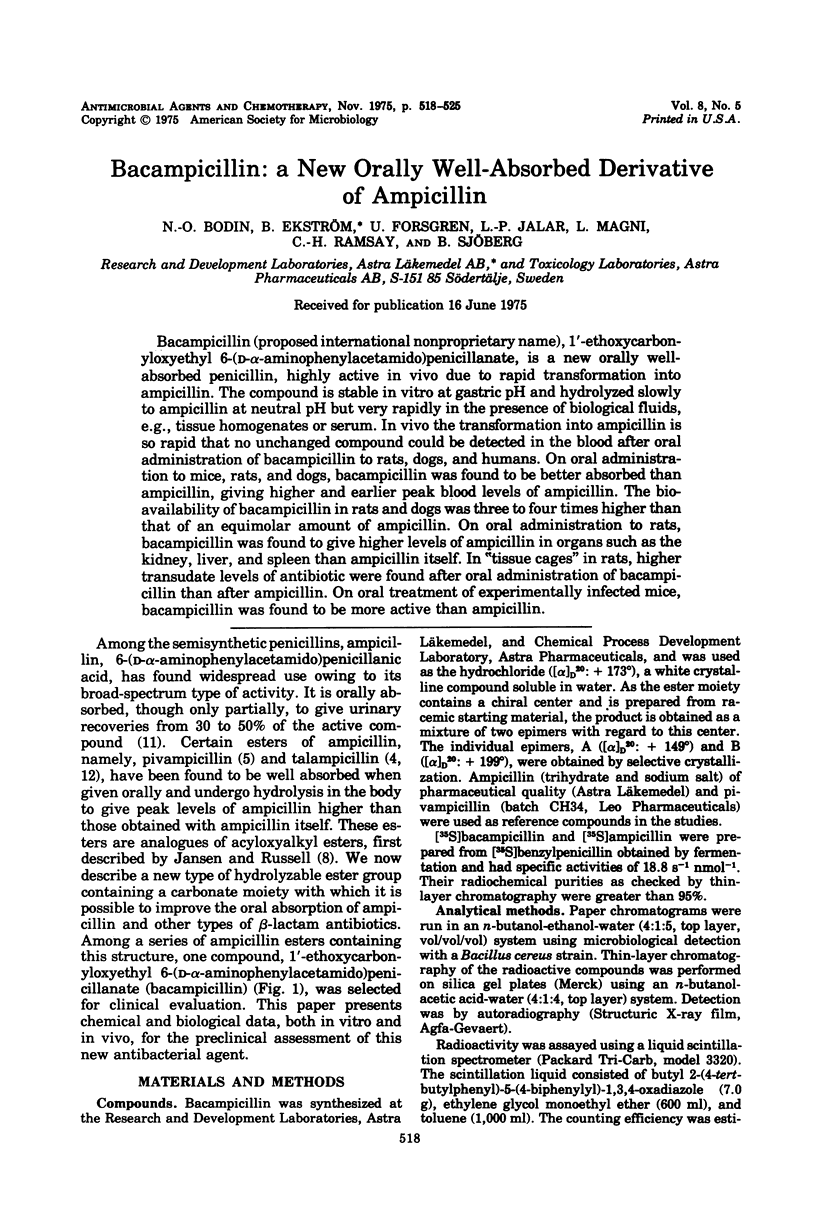
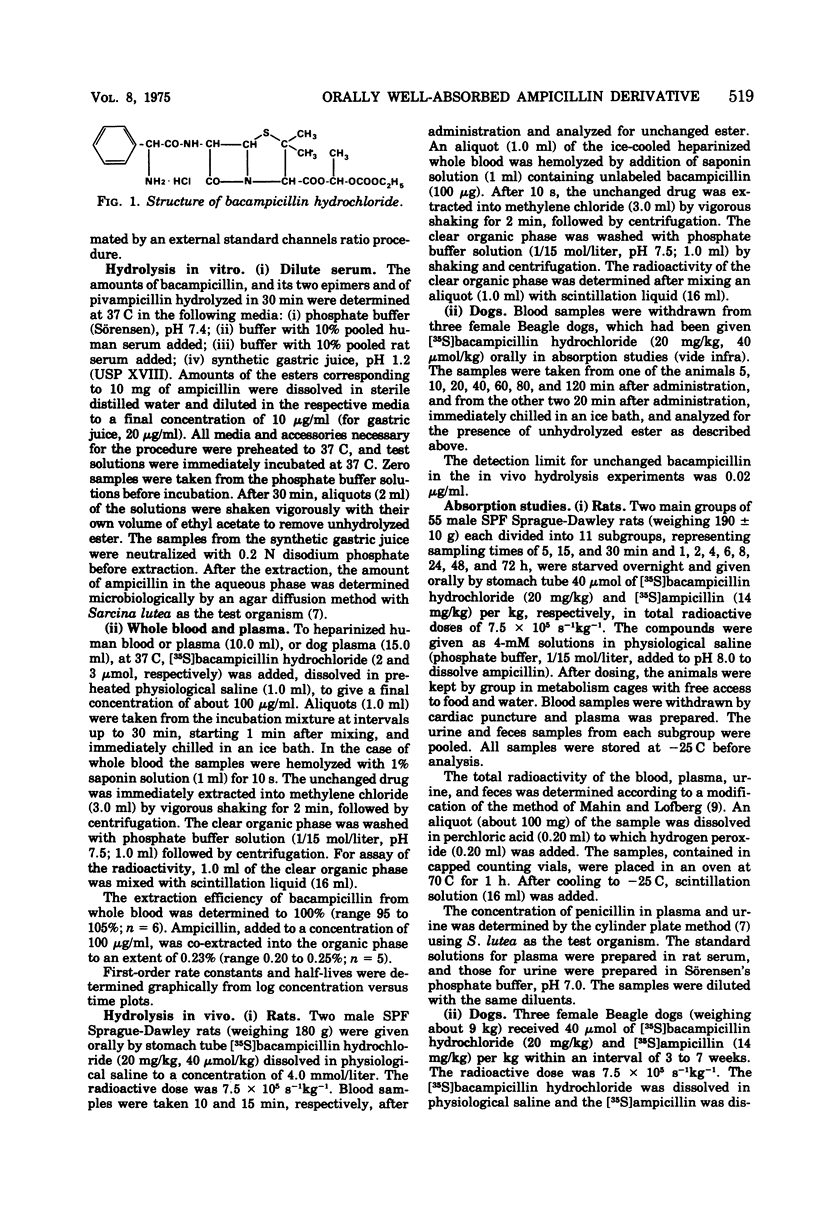

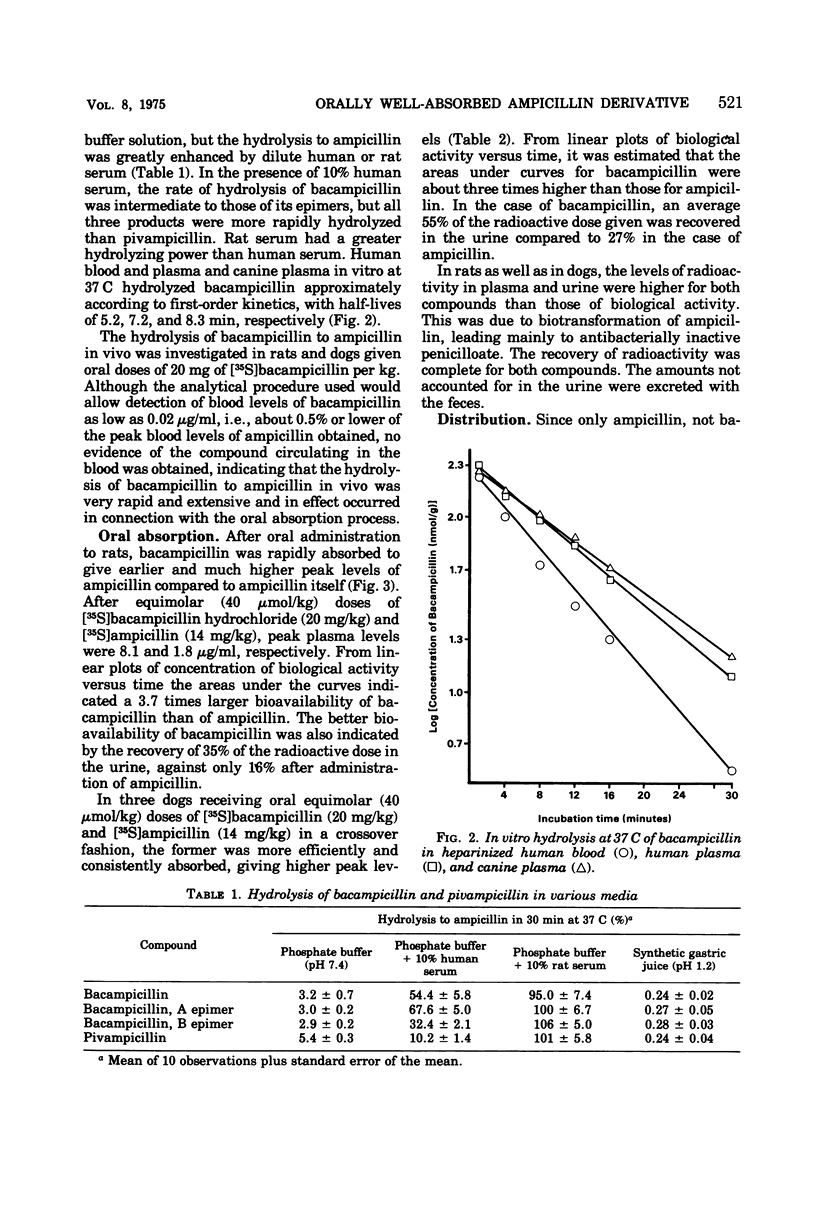
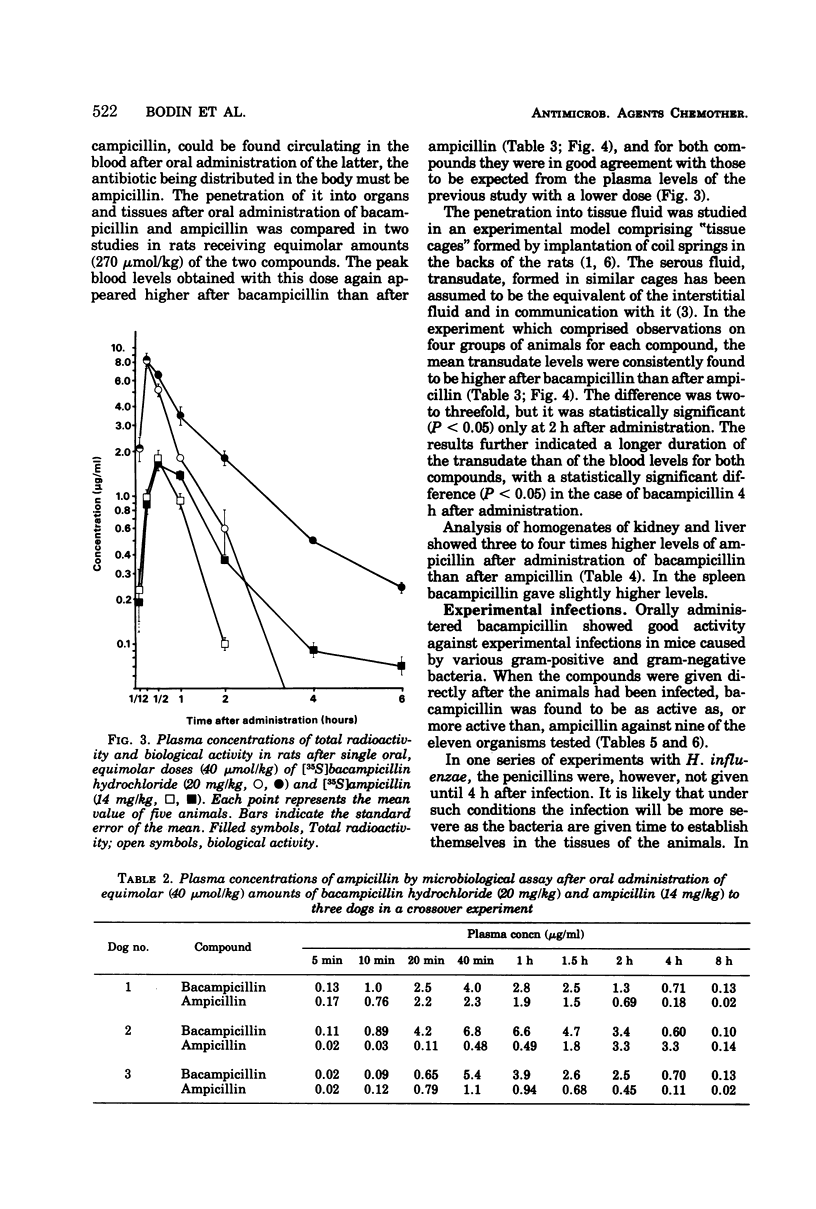
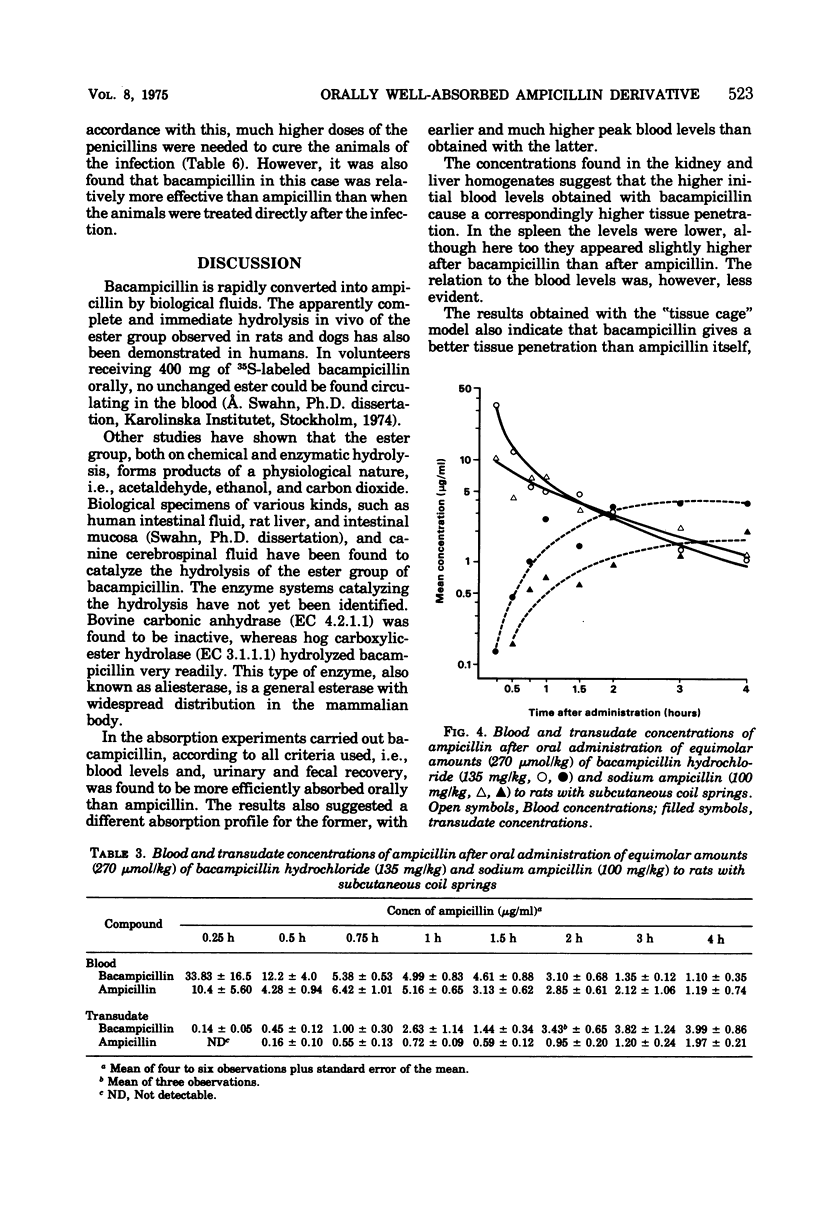
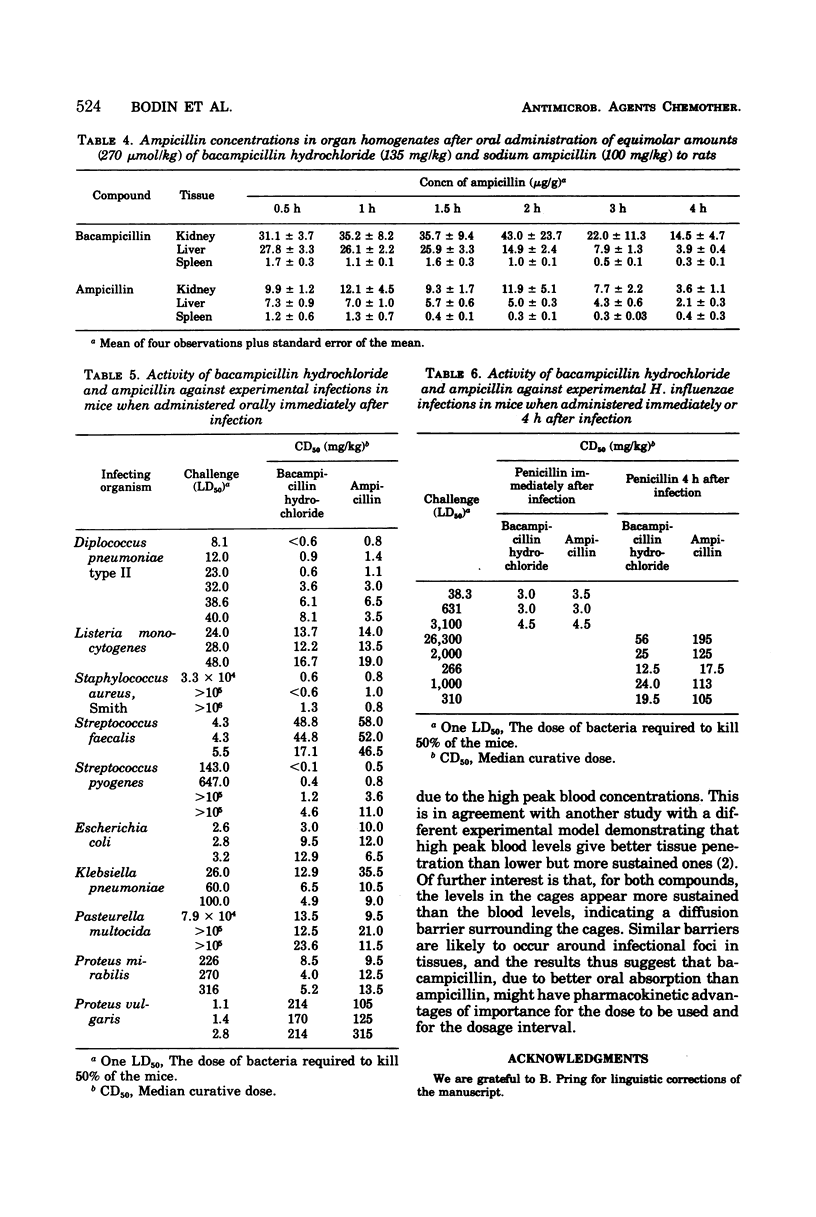
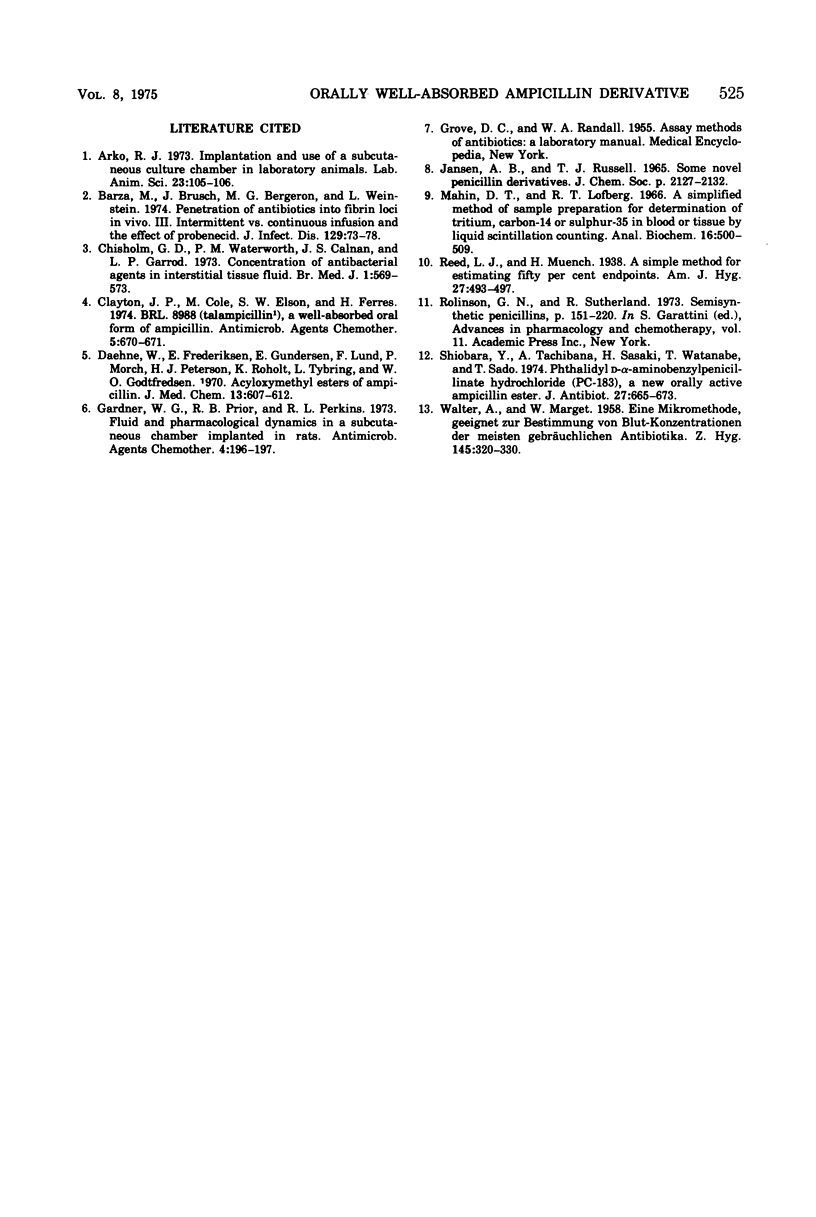
Selected References
These references are in PubMed. This may not be the complete list of references from this article.
- Arko R. J. Implantation and use of a subcutaneous culture chamber in laboratory animals. Lab Anim Sci. 1973 Feb;23(1):105–106. [PubMed] [Google Scholar]
- Barza M., Brusch J., Bergeron M. G., Weinstein L. Penetration of antibiotics into fibrin loci in vivo. 3. Intermittent vs. continuous infusion and the effect of probenecid. J Infect Dis. 1974 Jan;129(1):73–78. doi: 10.1093/infdis/129.1.73. [DOI] [PubMed] [Google Scholar]
- Chisholm G. D., Waterworth P. M., Calnan J. S., Garrod L. P. Concentration of antibacterial agents in interstitial tissue fluid. Br Med J. 1973 Mar 10;1(5853):569–573. doi: 10.1136/bmj.1.5853.569. [DOI] [PMC free article] [PubMed] [Google Scholar]
- Clayton J. P., Cole M., Elson S. W., Ferres H. BRL.8988 (talampicillin), a well-absorbed oral form of ampicillin. Antimicrob Agents Chemother. 1974 Jun;5(6):670–671. doi: 10.1128/aac.5.6.670. [DOI] [PMC free article] [PubMed] [Google Scholar]
- Daehne W., Frederiksen E., Gundersen E., Lund F., Morch P., Petersen H. J., Roholt K., Tybring L., Godtfredsen W. O. Acyloxymethyl esters of ampicillin. J Med Chem. 1970 Jul;13(4):607–612. doi: 10.1021/jm00298a005. [DOI] [PubMed] [Google Scholar]
- Gardner W. G., Prior R. B., Perkins R. L. Fluid and pharmacological dynamics in a subcutaneous chamber implanted in rats. Antimicrob Agents Chemother. 1973 Aug;4(2):196–197. doi: 10.1128/aac.4.2.196. [DOI] [PMC free article] [PubMed] [Google Scholar]
- JANSEN A. B., RUSSELL T. J. SOME NOVEL PENICILLIN DERIVATIVES. J Chem Soc. 1965 Mar;65:2127–2132. doi: 10.1039/jr9650002127. [DOI] [PubMed] [Google Scholar]
- Rolinson G. N., Sutherland R. Semisynthetic penicillins. Adv Pharmacol Chemother. 1973;11:151–220. doi: 10.1016/s1054-3589(08)60458-5. [DOI] [PubMed] [Google Scholar]
- Shiobara Y., Tachibana A., Sasaki H., Watanabe T., Sado T. Phthalidyl D-alpha-aminobenzylpenicillinate hydrochloride (PC-183), a new orally active ampicillin ester. I. Absorption, excretion and metabolism of PC-183 and ampicillin. J Antibiot (Tokyo) 1974 Sep;27(9):665–673. doi: 10.7164/antibiotics.27.665. [DOI] [PubMed] [Google Scholar]
- WALTER A., MARGET W. Eine Mikromethode, geeignet zur Bestimmung von Blut-Konzentrationen der Meisten gebräuchlichen Antibiotica; unter Ausnutzung des beobachteten Hemmeffektes von Hämoglobin gegenüber Bakterien. Z Hyg Infektionskr. 1958;145(4):320–330. [PubMed] [Google Scholar]


